
- DIGITAL MAGAZINE

MOST POPULAR
The Frog Life Cycle!
See how this amazing animal grows from tadpole to frog….
Ready for the lowdown on these amazing amphibians? Learning hats on, gang, let’s discover the frog life cycle…
The frog life cycle
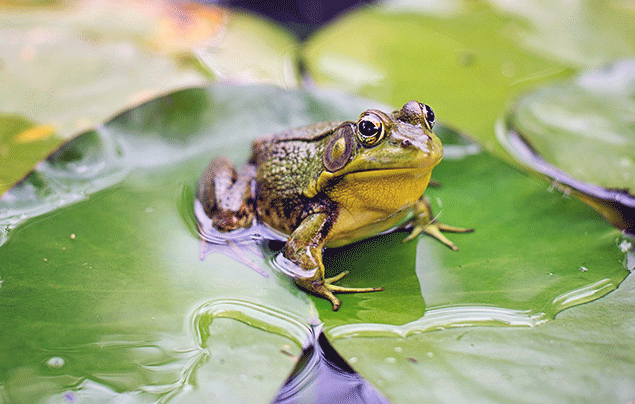
Frogs are animal athletes , with strong powerful legs that allow them to leap out of harm’s way. These powerful limbs are the secret to their success – and incredibly, it takes baby frogs weeks and weeks to grow them!
Like beautiful butterflies , frogs and toads undergo an astonishing transformation – which is called ‘ metamorphosis ‘ – as they grow up. From jelly-like eggs laid in water, they grow into wriggling tadpoles , and finally grow legs suitable for land!
But how does this mesmerising metamorphosis work? Let’s have a look at each stage of the frog life cycle in turn, to find out…
Stage 1: Extraordinary eggs

It all starts with adult frogs laying hundreds of tiny eggs , which clump together in groups known as frogspawn . This happens in early spring , when the weather is just starting to get warmer . Spotting frogspawn is often thought of as being a key sign of spring !
You can hunt for frogspawn in shallow, still water – a garden pond, for example! As the eggs are defenceless, they’re usually laid among vegetation and just below the surface of the water , to give them some protection .
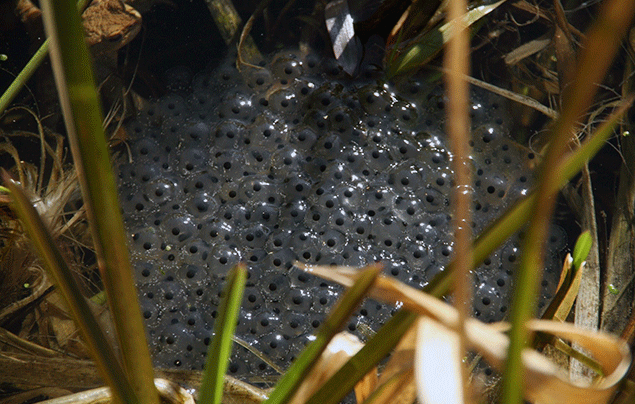
If you’re lucky enough to spot some of these strange eggs, pay attention to their shape . Frogs lay ‘frogspawn’, which looks like a round cluster of eggs, while toads lay ‘toadspawn’, which comes in long ribbons .
DID YOU KNOW? As far as scientists are concerned, there’s no difference between frogs and toads! They have different characteristics , but share the same family tree .
In the frogspawn, the baby frogs start out as tiny black dots surrounded by a jelly-like substance. Over time, they become comma-shaped , as their tails begin to develop – amazing!
Stage 2: Teeny tadpoles!
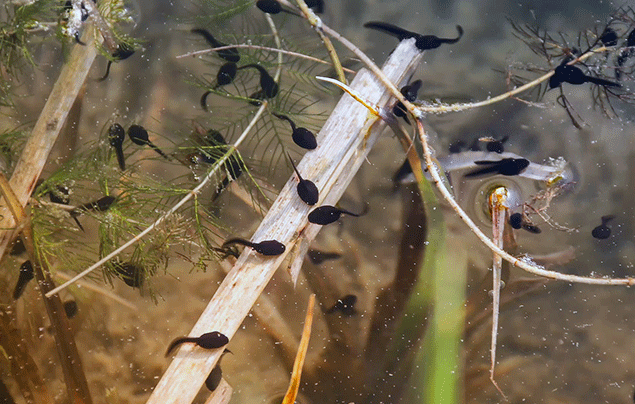
After spending 1-3 weeks eating the yolk of their egg, the baby frog hatches into the big, wide world.
Now, the baby frogs are known as tadpoles. They have gills , a mouth , and a long tail , which they need for swimming !
DID YOU KNOW? The tadpole stage of the frog life cycle is also known as the larval stage . Tadpoles are frog larvae , in the same way that caterpillars are butterfly larvae!
For the first week or two after hatching, tadpoles won’t move around very much , as they’re still absorbing some nutrition from the yolk of their egg. However, once the yolk is all gone, the tadpoles are big and strong enough to venture out into their watery world!
Unlike adult frogs, tadpoles can’t go on land – so they feed on plant material filtered from the water, and tear off tiny chunks of nearby vegetation .
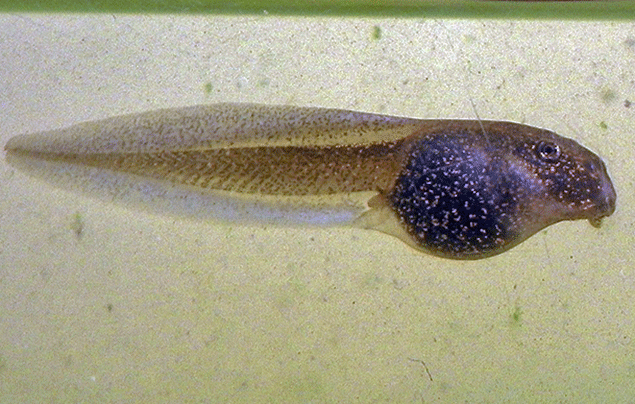
The legless, water-bound tadpoles slowly metamorphose into frogs over the next 14 weeks .
First, they grow back legs , then front legs too! Soon after, their body starts to change shape , and they’re able to start eating insects .
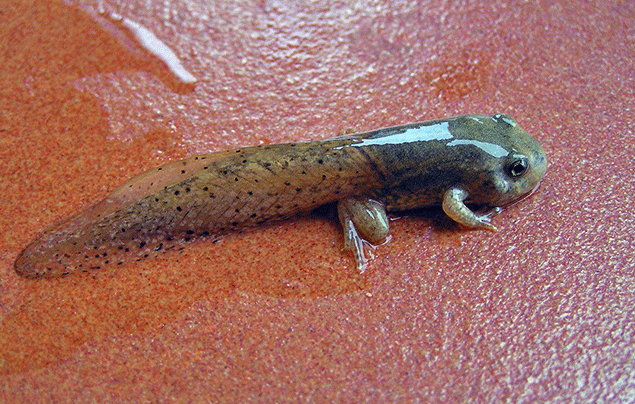
Next, the tadpoles’ tails shrink away , and skin grows over their gills , as they develop lungs and eardrums ! These are super important steps, as they prepare the tadpole for life on land .
Once their gills and tails are gone forever, tadpoles undergo one last 24-hour push , where the metamorphosis completes. Once this stage is finished, the baby frogs emerge from the water as tiny adults !
Amazingly, tadpoles are able to control the timing of their transformation. If they’re living in a dangerous environment, like a pond full of hungry fish, they will metamorphose more quickly, to make their escape! On the other hand, if their pond has lots of plants to munch through, and few predators – or if it’s extra cold on land – tadpoles can delay their metamorphosis, and remain in the water for up to a year. Wow!
Stage 3: Fully-grown frog!

And there you have it – the frogs are all grown up, and ready to head out into the big wide world!
As adults, frogs and toads are much less reliant on water. So long as they stick to the shade and don’t dry out , they can live on land – but they often return to ponds and lakes for a splash!
Before too long, the females will look for water to lay her own eggs. Once that’s happened, the life cycle is complete – what a frog-tastic life they lead!
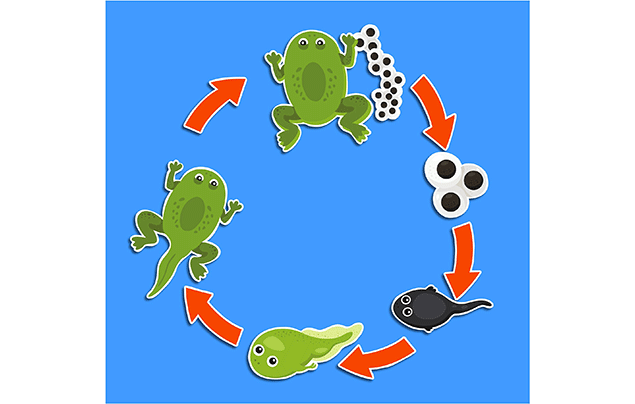
Thanks to S. Hermann & F. Richter; Jill Wellington; PollyDot; David Clode, and Venita Oberholster for the images used in this article.
Have you ever found frogspawn, or spotted a frog let us know in the comments below, leave a comment.
Your comment will be checked and approved shortly.
WELL DONE, YOUR COMMENT HAS BEEN ADDED!
I love the life cycle of a frog
I love frogs
BEST website EVER!!!!!!!!!!!!!!!!!!!!!!!!!!!!!!!
that is so cool
wow i am amazed by how the frog look and how the frogspawns group.
frogs are best
Need this for school very good
Good job at the work everyone!
never seen frogspawn
It's a useful article. It's very nice. well done.
love it!!!!!!
This is interesting
amazing work frogs!
frogs are slimy and grosss ewwwwwwwwwwwwww
They are cooooool
thank u for teaching me about frogs
i had seen frog spawn and also thank u for the facts
ive touched a frog, they are slimy.
frogs look funny and awesome
i have seen yellow brown greenish brown frogs
Frogs are cool
i seen a frog
Hi I have seen lot’s of frogs I want a pet frog
i love frog they r my fav amimal
wow i didnt know that scientists consider frogs and toads the same. but in my opinion they arn't but they are cool in their own ways.
Frogs are fun.
This is fun because it is interesting.
I wish I was a frog
i love frogs, they are soooo cute! so i love this article
i love frog
i like frog a little
i love frogs
frogs look awesome
i love frog and i am new here so what now
I love frogs they’re so cute!
I love it! Its so cool to see them grow.
so awesome!
Very cute and very strange.
I love it!Its so cool to see them grow.
I’m doing researching about frogs
I’ve seen a frog
This is amazing
this is awesome
i think frogs are cute i have frog stuff on roblox
it is really fascinating creatures how theese little frogs grow up,they are my second favorite animal
Frogs are my favourite animal and it is fascinating to here how these little creatures grow up.
wow so cool
thxs a ton! rlly help with my last minute essay :]
Very helpful
Thank you this helped with my frogs and toads projects a lot.
Thanks! This helped a lot
this was vere good and it hade lotse of facts so i give it a 10/10
wow amazing
Thank you! Helped a lot with my essay!
This is nice
Thank you I had a school project and this website helped me out a lot
nice website
Interesting!
So cool I learnt a lot
this info was very insightful thanks!
it was very helpfull
soooo good it help me throw an assignment.
The frog eggs looked realy cool and the frog
Interesting
Very intresting
Intersting fact
It's super cccccccoooooooolllllllllllll
Super cool I thoght frogs were not usefull.
Their cool and beautiful!
Amazing! The frog cycle shows very cool facts!
OMG cool frogs
OMG!! This is so cool. could you do how frogs lay their eggs next time.
very weird but cool
That is really cool I am amazed
I love your info.!!
I like frogs. There so amazing!
This is a really good information report on a life cycle of a frog
this is a frog
Wow amazing 10/10
nice frogs are very cute I have a pet dart frog
That was so cool! I have never really known how they develope, But now I know!
OMG THIS IS SO COOL
cool wow Amazing
I love frogs and now i know even more about them!
i love frogs and now i know about them even more.
This had very good information
This is pretty cool I rewrote it in my own words so I can explain it in my own words in the future
WOW so cool that really really helped with my school work thanks so much!
Im in Texas and it’s the end of August. I have 3 frogs living in my backyard homemade frog pond/fountain. I came upon the male frog fertilizing the females eggs a couple of weeks ago and now I have tadpoles. Lots and lots of tadpoles. They’re feeding on the algae on the sides of the tub. I’m so excited to watch them develop.
*Speechless* I don't know, how much AMAZING!! information I haven't red yet but I know it will be... AWSOME!
Your information is always accurate and is always of course AMZING!
i like frogs and toads so thank you for educating me
This is really cool I didn't know half of it. It's really helpful for my school work
That was a good way to talk about the frog lifesycle, and all the pictures were really good. But maybe try and put more pictures in and maybe get some kids to draw some illustrations, that would be cool. In your books, when the animals vs each other, try and put more of those in. And with your font, make it colourful and atractive. But besides that, your books, docs, magazines, and photos, are all great! Keep up the good work! Kai pai!
weird but cool
Found it really helpful thank you natgoekids!
it tells me things that i never new and there was so much words i never new that were words
I wrote a book about the life-cycle of a frog! This really helped me!
I kinda like frogs actually.
I loved it! Also it helped me a lot, Thank You!!
The eggs look so ugly
It's very good
i like frogs
The best true info I've seen on a app
This is a very useful source!!
That is amazing!
cool I like frogs
THAT IS SO COOL
That was an awesome text NAT. GEO. KIDS
Yay, this made me pass my test!
This is so good for my speech
i love this site so much and it is really great for animal reaserch
it is so entresting I love I can't wait to read it in my class
Thats so entresting
i didn't know that
animals are kind
I caught tadpoles with my cousin's. We were at this river and there were frogs and tadpoles everywhere!
wowowowowowowowowowowowowowowowowow
interesting!
Animals are great!
I hope my school pond works!…Today
HELP FULL!!!!!
this is a very good site
This website helps me a lot with my learning, thanks a lot for making this amazing website! ;D
I loved this, thx!
This is awesome for people that don’t know how The life cycle of a frog a lot of half thank hou
so cool love it
Learned so much
you guys are the best
Helps a lot! Thanks!
MY PET FROGS LOVE THIS ARTICLE
Yes, I saw frogs in a drain around my home and when my puppy saw one, he licked the frog and got sick. They come out in the night and when ever it rains.
I like this
i love the lifcycle
THIS IS VERY VERY COO AND GOOD BECAUSE IT HELPS ME TO LEARN.THIS IS THE BEST WEBSITE EVER. BYE FOR NOW AND BYEEEEEEEEEEEEEEEEEEEEEEEEEEEEEEEEEEEEEe
Pretty cool
so cool to learn about frogs
Thanks for the info
All of this information is so cool ! Good luck for the next magazine National Geographic Kids! I am seriously not kidding but If you can try adding more extra information next time you add more stuff to your terrific website.
I LOVE THIS!
i learnt a lot
Good information
Thanks for cool info
THIS IS GOOD
hands up if you like dun dun daaa NG KIDS
i love NG KIDS
cool and thank
isaw a froggie
it's so amazing and I did not even know they could do that
Absolutely Brilliant
sooooooooo cool!!!
cool website
Ifound it fun
COOOOOOOOOOOOOOl
This is Realy GooooooooooooooooooooooooooooooooooooooooooooooooooD
OMG I love this book so muccccchhhhhhhhhhh
it is very interesting
I like this website
Very cool and helps me to learn
awsome that is cool we had a choice of a turtle or frog for our assesment
so cooooooooooooooooooooooooooooooooooooooooooooooooooooooooooooooooooooooooooooooooooooooooooooooooooooooooooooooooooooooooooooooooooooooooooooooooooooooooooooooooooooooooooooooooooooooooooooooooooool
that is good heved good information is so amazing
this is cool
This was really helpful, thanks!
I like how the frog look like!
that was amazing
I already new all this but it is Amazing
LOL WOW OMG!!!!!!
I love frogs;frogs are awesome!
I have seen a buch of frog spawn at my cousins house a couple of years back though before they could hatch some animal got to them first.
wow thats amazing
At my school, there are lots of frogs spawns
I have lots of frog spawns at my school
i am going to take care of it too!
This piece of writing is very detailed.
I love this artical it is very detailed
awesome and fun facts at national geographic.com byeeee for now
Can't wait!
I really liked reading this I have spotted a lot of frogspawn lately
I Never knew this much about frogs and frogspawn. Do you have any more interesting and amazing facts?
As I prepared to open our pool for the summer it was loaded with tadpoles. I used a net and caught as many as I could. I then set up an aquarium to watch the metamorphosis take place
Thank you really helped on my assignment. It got my score up.
Fascinating
i am a student
COOL! MY FRIEND HAS A DWARF FROG
It's super cool!
frogs are so cooll!!
YASSSSSSSSSSSSSE. FROGSSSSSSS
that is so much cool about frogs
fun and imformational
roar roar roar
Hi my name is Fatima
I ❤ frogs and toads!
frogs life cicle is very cool
I saw frog spawn at my pond
i love forgs
COOOOOOOOOOOOOOOOOOOOOOOOOOOOOl
I love frogs I wish I had one for a pet.
High-frequency
coooooooooooooooooooooooooooooooooooooooooooooooool
i have seen 2 frogs before!
this book is cool !
that was so cool !
FROOOOOOOOOOOOOOOOOGGGGGGGGSSSSSSSSSSSSS
hello!!!!!!!!!!!!!!!!!!!!!!!!!!!!!!!!!!!!!!!!!!!!!!!!!!!!!!!!!!!!!!!!!!!
We have lots of tadpoles in our pond!
i think butterflys are winners but frogs are my 2nd favs
Frogs are asome
They breath through there skin
i love frogs because the color is gods favorite color and they are so nice and cool
I like FROG because they are COOOLLLL!!!
I like FROGS because they are COOL!!!
their like orbies with black stuff inside
interesting...
It's so cute!
I loved the Last one With the Fuly Groan Frog !!!
Wow inspiring
the eggs look like those wierd orbie things
hiiiiii l like it
hiii l like it
I <3 frogs, thank you I like it
hello bye hello bye
I like crocodiles
I love the pictures
I love ALL animals and I love nashal geographic mag! Let's save the world!
Among all animals in the world Frogs are 4th place (Rabbits 1st, Lion 2nd and rhinos 3rd)
lets save the world! and I love the frog life sikle
thank you for this fact
Frogs lay eggs called spawns
I raise tadpoles and frog eggs
I found many frogs but no frogspawn
I like this book it gives lots of new facts
Thank you, really helped
It’s brilliant
learned this at school
Really helped
yeah so cool like not
hi my avatar is a frog -.- :>)
i love the last stage i find them cute
once my friend raised a frog from a tadpole but it died )=
this is nice
I luv this app!
Cool frogs!
I like tadpoles with legs!
I love frogs! there so cute and amazing!!
LOVE IT!!!!!!!!!!!!!!!!!!!!
nice, this is just for my science project called "Frog Life Cycle." Thank you very much and I am grade 3. Btw, teacher sent me this.
Cooooooooooool
interesting
pretty wack
I HAVE ONLY SEEN TATAPOLE.
that cool but wired
frog are amazing.
I love frogs they are the best and I love the bull frog.
This is coooooollll
Love frogs my dude
I look frogs! They are so fascinating
Mmmm Yaaa. Amazing Facts!
so interesting.
hi im whiskerz
I have seen frogs
COOOOOOOOOOOL!
Thank you for telling us all about this. We saw hundred of tadpoles in the Lye Valley yesterday and are heading out again today with some friends to look at them again. We really hope to see their transformation.
i love these facts it is so cool
eyes look like eyeballs
MOZAMBIQUE HERE!!!
i like this website
This is my science fair project now!!
wow this site really told me alot of stuff i didn't know
Frogtastic!
I have seen a fully grown frob
I once found frog but I don't think I have actually found frogspawn very interesting life cycle of the frog thank you national geographic kids.
Wonderful!I did not know some information about frogs
That was so cool
cool and weird
https://www.natgeokids.com/wp-content/themes/natgeokids/images/badges/2.png
very good thank you
Cool and weird
There are some frogspawn in our neighbors pond. And maybe some frogs then too!
There are some frogspawn in our neighbors pond. And maybe then frogs too!
This is amazing so cool i love frogs
CUSTOMIZE YOUR AVATAR
More like nature.

10 Top Tomato Facts!
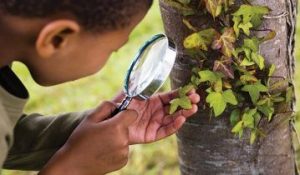
Scavenger Hunt!

3 super science experiments to try at home!

The life cycle of flowering plants

Sign up to our newsletter
Get uplifting news, exclusive offers, inspiring stories and activities to help you and your family explore and learn delivered straight to your inbox.
You will receive our UK newsletter. Change region
WHERE DO YOU LIVE?
COUNTRY * Australia Ireland New Zealand United Kingdom Other
By entering your email address you agree to our Terms of Use and Privacy Policy and will receive emails from us about news, offers, activities and partner offers.
You're all signed up! Back to subscription site
Type whatever you want to search
More Results

You’re leaving natgeokids.com to visit another website!
Ask a parent or guardian to check it out first and remember to stay safe online.

You're leaving our kids' pages to visit a page for grown-ups!
Be sure to check if your parent or guardian is okay with this first.

- Science Notes Posts
- Contact Science Notes
- Todd Helmenstine Biography
- Anne Helmenstine Biography
- Free Printable Periodic Tables (PDF and PNG)
- Periodic Table Wallpapers
- Interactive Periodic Table
- Periodic Table Posters
- How to Grow Crystals
- Chemistry Projects
- Fire and Flames Projects
- Holiday Science
- Chemistry Problems With Answers
- Physics Problems
- Unit Conversion Example Problems
- Chemistry Worksheets
- Biology Worksheets
- Periodic Table Worksheets
- Physical Science Worksheets
- Science Lab Worksheets
- My Amazon Books
The Frog Life Cycle

The frog life cycle involves dramatic transformations – a process known as metamorphosis. Learn about the intricate stages of frog metamorphosis from the egg to tadpole into the adult frog. Also explore variations in the life cycle among different frog species.
Stages of Frog Metamorphosis
The frog life cycle has three basic steps: eggs → tadpole → adult. However, a lot goes on during each step.
Stage 1: Eggs
The life cycle of a frog begins with eggs, often laid in a cluster or string format, usually in still water or damp places. Females deposit hundreds or thousands of eggs to increase the chances of survival. The eggs are vulnerable to various predators and environmental conditions. Females of some species retain fertilized eggs and release them just before hatching (ovoviviparous) or after they hatch within her body (live-bearing or viviparous).
Stage 2: Embryo
The frog embryo begins forming within a protective jelly-like substance. After a few days, it resembles a tiny fish. The frog’s heart starts beating.
Stage 3: Tadpole
Soon, the embryos hatch as tadpoles. Tadpoles are the larval stage of frog development. These creatures somewhat resemble fish, with gills for breathing underwater and tails for swimming. They eat algae, leaves, and detritus in the water to fuel their growth. But, the tail also serves as a nutrient supply.
Stage 4: Metamorph Stage
After a few weeks, tadpoles undergo remarkable physical transformations in a process called metamorphosis. The tadpole grows hind legs, followed by front legs, while its tail slowly shortens and disappears. It develops lungs to replace gills and its diet shifts from being an herbivore to an omnivore or carnivore , depending on the species. The final transition from tadpole into froglet or frog is very fast (about a day) and the frog is vulnerable to predators and other threats.
Stage 5: Froglet
Once the tadpole grows legs, it is called a froglet. While it still may have a bit of tail left, it leaves the water and explores the terrestrial environment.
Stage 6: Adult Frog
Eventually, the froglet transforms into a mature frog. The frog’s development doesn’t stop here, though. Juveniles continue growing and developing features such as skin coloration, vocal sacs in males, and the ability to reproduce.
Frog Breeding Behavior
Frog breeding behaviors are diverse and fascinating. They usually return to the same bodies of water year after year for breeding purposes. The males attract females with distinctive calls, which also serve to ward off rival males.
Once a male and female pair up, the male clasps the female in a position known as amplexus. As the female releases her eggs, the male fertilizes them externally in the water. In a few species, the female retains her eggs and internal fertilization occurs. The breeding season varies depending on the species and the geographical location.
Variations in Metamorphosis across Frog Species
While the stages outlined above are the norm for most frog species, there are some variations. For example, the members of the family Leptodactylidae (the “marsupial frog”) carry their eggs in a pouch on their back. The eggs hatch into froglets, bypassing the tadpole stage entirely.
In the case of the Surinam toad, eggs embed in the female’s back and develop into froglets. Poison dart frogs lay their eggs on land, and the males carry the hatched tadpoles to nearby water bodies.
Direct development occurs in some species. This is where frogs hatch directly from eggs as small adults (no tadpole stage). The terrestrial-breeding Eleutherodactylus coqui or coqui frog reproduces via direct development. This is an adaptation to a terrestrial lifestyle, where water bodies may be scarce.
Ten Fascinating Frog Life Cycle Facts
- Frogs lay a vast number of eggs because the survival rate is remarkably low; only about five out of 1,000 eggs become adult frogs. But, some females lay only part of their eggs at one time, in case conditions become more favorable later.
- Tadpoles don’t immediately look like adult frogs. They lack arms or legs but have a tail and they breathe through gills instead of lungs.
- The transformation process from tadpole to frog usually takes between 6 to 12 weeks, but in some species, it can last up to 2 years.
- Some frogs, like the glass frog, lay their eggs on the underside of leaves to protect them from predators.
- The wood frog ( Rana sylvatica ) has a symbiotic relationship with green algae. It includes the algae in the jelly mass with the eggs so photosynthesis helps boost oxygen for the larvae.
- The African Bullfrog lays up to 4,000 eggs at a time.
- A frog’s lifecycle is an indicator of an ecosystem’s health. They are bio-indicators, meaning their health directly relates to the overall health of the ecosystem.
- In cold climates, some species of frogs hibernate in winter. They bury themselves in the mud and their bodies produce a natural anti-freeze that protects their vital organs from damage.
- The gastric-brooding or platypus frogs from Australia swallow their eggs and brood them in their stomachs. The babies give birth through their mouth. Both species of these frogs are extinct, but scientists are using cloning to try to bring them back.
- Frogs use one of two methods of breeding: prolonged breeding or explosive breeding. In prolonged breeding, adults meet up at a pond or other location at a certain time of year. This is the usual method. In explosive breeding, the whole process of attracting mates, breeding, laying eggs, and progression to adulthood happens very quickly. Explosive breeding occurs where conditions are only favorable for a brief window of time.
- McDonald, K.R. (1990). “Rheobatrachus Liem and Taudactylus Straughan & Lee (Anura: Leptodactylidae) in Eungella National Park, Queensland: distribution and decline”. Transactions of the Royal Society of South Australia . 114 (4): 187–194.
Related Posts

Life Cycle of Frogs - Stages of Frog Metamorphosis

There are over 4,800 known frog species found worldwide in a variety of habitats, from rainforests to deserts. They come in a wide range of colors, sizes, and even have unique adaptations depending on their environment. Frogs undergo a remarkable metamorphosis during their life cycle. They start as eggs laid in water, which hatch into tadpoles. Tadpoles are aquatic creatures with gills and tails. Through metamorphosis, tadpoles develop lungs and legs, transforming into adult frogs that can live both on land and in water.
This AnimalWised article will take you through the amazing life cycle of frogs , explaining each fascinating stage.
What is the process of reproduction in a frog?
How are frogs born, stage 1: egg, stage 2: tadpole, stage 3 - transformation from tadpole to frog, stage 4- adulthood.
Frogs ( anurans ) are dioecious , meaning they have separate sexes: male and female. Additionally, many frog species exhibit sexual dimorphism , where males and females have distinct physical characteristics.
Breeding season for frogs typically occurs in spring . During this time, females with mature eggs migrate to bodies of water. Here, they encounter males who use vocalizations to attract mates.
Fertilization in frogs is external, a process known as amplexus . The male clasps the female in a position called amplexus, which can be either inguinal (around the lower body) or axillary (around the chest). This position stimulates the female to release eggs. Simultaneously, the male releases sperm-laden seminal fluid, fertilizing the eggs externally as they emerge.
Frog eggs are typically surrounded by a gelatinous capsule . This capsule absorbs water, causing the eggs to swell and providing some protection from the environment.
The gelatinous mass serves several purposes . First, the lack of a hard shell on frog eggs makes them susceptible to drying out. Laying them in large masses helps retain moisture. Additionally, the gelatinous material offers some physical protection against bumps and potential predators. It can also act as a barrier against harmful microorganisms.
The specific location where eggs are laid varies depending on the frog species. Some species lay their eggs in large masses attached to aquatic vegetation, while others might deposit them within the rosettes of specific plants.

Frogs undergo a fascinating metamorphosis, not a traditional birth .
Within a few weeks of the fertilization, the eggs hatch into young larvae, called tadpoles . These exclusively aquatic creatures have gills for breathing underwater and a tail for swimming. They initially feed on the yolk sac attached to their bodies before developing a mouth and feeding on algae and plants.
Over a period of weeks or months, tadpoles undergo a remarkable transformation . They develop lungs, lose their gills and tail, and grow legs. This process is called metamorphosis.
Finally, the tadpole's body transforms completely , and a tiny frog emerges. When they reach this point, they are ready to live a semi-terrestrial life (hence the name amphibian) although they always need humid places or close to water sources.
While most frog species follow an R strategy , meaning they have many offspring with minimal parental care, some exhibit a K strategy with interesting parental behaviors. Species like the Surinam toad ( Pipa pipa ), Darwin's frog ( Rhinoderma darwinii ), and poison dart frogs ( Oophaga genus ) showcase this.
In these K-strategist species, the male takes a more active role . He protects the eggs laid on the forest floor from predators and even carries water in his cloaca to keep them moist.
Once hatched, the female of these K-strategist species might carry the tadpoles on her back until she places them in suitable locations like bromeliads (rosette-shaped plants). She might even feed them unfertilized eggs until they're strong enough for metamorphosis.
In the upcoming sections, we will explore the distinct stages of metamorphosis experienced by frogs in greater detail. We have organized these stages in the following way:
- Stage 1 : Egg
- Stage 2 : Tadpole
- Stage 3 : Transformation from tadpole to frog
- Stage 4 : Adulthood
Intrigued by frog reproduction ? Dive deeper in this article.
A frog's amazing transformation starts within the fertilized egg .
Early on, rapid cell division creates a ball of cells called a blastula . This blastula then undergoes a process called gastrulation. During gastrulation, the cells within the blastula rearrange to form different layers, establishing the basic blueprint for the tadpole's body. This includes the foundation for the digestive system, where the tadpole will eventually process its food.
Next comes neurulation , where a special area called the neural plate thickens. As development progresses, the neural plate transforms into the tadpole's nervous system, which will eventually control its movements and senses – a crucial system for both the tadpole and the adult frog.
Finally, after a period of around 6 to 9 days, depending on the species and water temperature, tiny tadpoles with gills and tails hatch from the eggs , ready to take on their aquatic life.
Ever wondered if frogs have bones ? Read on this other article to find out.

The tadpole stage is the second crucial phase in a frog's life cycle. This entirely aquatic stage is characterized by several key adaptations that allow the tadpole to thrive in the water until it's ready for its dramatic transformation into a land-dwelling frog.
Following fertilization, a tiny tadpole emerges from the egg. Unlike a future adult frog, the tadpole has a well-defined head and body, but crucially, it lacks limbs for locomotion at this point.
The tadpole's body is specifically designed for life in the water . A strong, flattened tail acts as a powerful swimming propeller, propelling the tadpole through the water. The ventral positioning of the mouth allows the tadpole to graze on algae and other food sources growing on underwater surfaces like rocks and plants. Behind the mouth, a unique feature called an adhesive disc can be found in some tadpole species. This specialized disc acts like a suction cup, allowing the tadpole to cling to plants or rocks in flowing water. This helps the tadpole maintain its position and avoid being swept away by currents.
On either side of the tadpole's head lie feathery structures called gills . These gills are essential for the tadpole's survival, as they allow it to extract dissolved oxygen from the water, similar to how fish breathe. Unlike adult frogs, tadpoles cannot breathe air yet.
While primarily herbivores feeding on algae and other plant matter, tadpoles exhibit surprising dietary flexibility . Rows of tiny teeth (labial teeth) around their mouths are perfect for scraping vegetation. However, some species are opportunistic feeders. Depending on the availability of food sources, they might consume small invertebrates or even resort to cannibalism if food is scarce.
The tadpole stage is a period of significant growth and development. Here, the tadpole focuses on gathering the nutrients it needs to prepare for the next critical stage – metamorphosis . This remarkable transformation will see the tadpole undergo a complete change, transitioning from an aquatic creature to a land-dwelling frog.
Curious about what tadpoles munch on ? Dive deeper in this article.

Stage 3 encompasses the entire metamorphosis process itself . It's the dramatic transformation where the tadpole, a fully aquatic creature, changes into a frog - an air-breathing amphibian capable of living both on land and in water (depending on the species). Here is what happens in more detail:
- Hind legs appear first, followed by the forelimbs, gradually transforming the tadpole into a more frog-like shape. These limbs become essential for hopping and maneuvering on land.
- Skin pigmentation develops, transitioning the tadpole from its translucent, aquatic appearance to a more camouflaged or brightly colored form suited for its terrestrial life.
- Through a controlled cell death process called apoptosis, the tail is reabsorbed . This not only streamlines the body for land movement but also provides essential nutrients for the developing frog's organs and tissues.
- Lungs develop within the tadpole's body, while the gills are gradually reabsorbed. This shift allows the frog to breathe air efficiently once it emerges from the water.
- The circulatory and nervous systems undergo significant changes to support the demands of an adult frog. The circulatory system becomes more complex to deliver oxygenated blood throughout the body, while the nervous system refines sensory processing and motor control for life on land.
- Eyes develop eyelids for protection from dust and debris, and the auditory system refines to pick up sounds better suited for a terrestrial environment. This allows the frog to locate prey, evade predators, and communicate with other frogs.
- The tadpole's mouth transforms into a muscular tool perfect for catching prey on land. The tongue becomes protrusible, allowing the frog to rapidly extend it and capture insects and other small invertebrates.
The duration of metamorphosis can vary depending on the frog species and environmental factors . It can take anywhere from a few weeks to several years for a tadpole to become a fully formed adult frog.

Following metamorphosis, the young frog (often called a froglet) will continue to grow and develop .
This period is marked by increasing size, further refinement of adult features, and eventually, reaching sexual maturity . The timeframe for reaching sexual maturity varies depending on the species, but it can take anywhere from a few months to several years. Once mature, the frog can participate in breeding and begin the cycle anew by laying eggs.
As an adult frog, the animal will spend its days hunting for food, avoiding predators, finding mates, and potentially caring for offspring (depending on the species). This stage can last for several years, with some frog species living for over a decade in the wild.
Dive deeper into the fascinating world of frogs. This article explores their amazing anatomy .
If you want to read similar articles to Life Cycle of Frogs - Stages of Frog Metamorphosis , we recommend you visit our Facts about the animal kingdom category.
- Hickman, C.P., Ober, W.C., & Garrison, C.W. (2006). Comprehensive Principles of Zoology , 13th Edition. McGraw-Hill-Interamericana, Madrid. 1022 pp.
- Kardong, K. V. (2007). Vertebrates: Comparative Anatomy, Function and Evolution . McGraw Hill, Interamericana. 782 pp.
- Wake, D.B., & Koo, M.S. (2018). Amphibians . Current Biology, 28(21), 1237-1241.

The Life Cycle of a Frog
It includes three stages: Egg, larva, and adult
- Habitat Profiles
- Marine Life
- M.S., Applied Ecology, Indiana University Bloomington
- B.S., Biology and Chemistry, University of Illinois at Urbana-Champaign
The life cycle of a frog consists of three stages: egg, larva, and adult. As the frog grows, it moves through these stages in a process known as metamorphosis. Frogs are not the only animals to undergo metamorphosis; most other amphibians also undergo remarkable changes throughout their life cycles, as do many species of invertebrates . During metamorphosis, two hormones, prolactin and thyroxine, control the transformation from egg to larva to adult.
Riza Arif Pratama / EyeEm / Getty Images
The breeding season for frogs usually occurs during the spring in temperate climates and during the rainy season in tropical climates. When male frogs are ready to breed, they often use loud croaking calls to attract partners. Males produce these calls by filling a vocal sac with air and moving the air back and forth to create a chirp-like sound.
When mating, the male frog holds onto the female's back, clasping his front legs around her waist or neck. This embrace is referred to as amplexus; its purpose is to ensure that the male is in the optimal position to fertilize the female's eggs as she lays them.
Stage 1: Egg
Peter Garner / EyeEm / Getty Images
Many species lay their eggs in calm water among vegetation, where the eggs can develop in relative safety. The female frog lays numerous eggs in masses that tend to clump together in groupings known as spawn. As she deposits the eggs, the male releases sperm onto the eggs and fertilizes them.
In many species of frogs, the adults leave the eggs to develop without further care. But in a few species, parents remain with the eggs to look after them as they develop. As the fertilized eggs mature, the yolk in each egg splits into more and more cells and begins to take the form of a tadpole, the larva of a frog. Within one to three weeks, the egg is ready to hatch, and a tiny tadpole breaks free.
Stage 2: Tadpole (Larva)
Johner Images / Getty Images
Tadpoles, frogs' larvae, have rudimentary gills, a mouth, and a long tail. For the first week or two after the tadpole hatches, it moves very little. During this time, the tadpole absorbs the remaining yolk left over from the egg, which provides much-needed nourishment. After absorbing the yolk, the tadpole is strong enough to swim on its own.
Most tadpoles feed on algae and other vegetation, so they are considered herbivores. They filter material from the water as they swim or tear away bits of plant material. As the tadpole continues to grow, it begins to develop hind limbs. Its body elongates and its diet grows more robust, shifting to larger plant matter and even insects. Later in development, front limbs grow and tails shrink. Skin forms over the gills.
Stage 3: Adult
Danny James / Getty Images
At approximately 12 weeks of age, the tadpole's gills and tail have been fully absorbed into the body, meaning that the frog has reached the adult stage of its life cycle. It is now ready to venture out onto dry land and, in time, repeat the life cycle.
- Life Cycle of Butterflies and Moths
- The Life Cycle of a Jellyfish
- The 4 Stages of the Firefly Life Cycle
- The Dragonfly Life Cycle
- The 4 Stages of the Ladybug Life Cycle
- Top 10 Facts About Frogs
- The Life Cycle of a Spider
- The Best and Worst Fathers in the Animal Kingdom
- The Life Cycle of Fleas
- Amazon Milk Frog Facts
- Northern Leopard Frog Facts
- The Types and Stages of Insect Metamorphosis
- How to Identify the Common Green Darner Dragonfly
- What Is Krill?
- Red-Eyed Tree Frog Facts
- Dragonflies, Suborder Anisoptera
- Earth Science
- Physics & Engineering
- Science Kits
- Microscopes
- Science Curriculum and Kits
- About Home Science Tools
Science Projects > Life Science Projects > Life Cycle of a Frog
Life Cycle of a Frog
What is a life cycle.
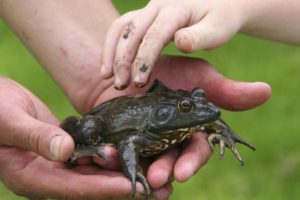
A life cycle refers to the stages or changes that an animal goes through while it’s alive. A life cycle repeats itself (or goes in a circle) for each new generation of life.
There are lots of different kinds of animals living on earth and many different types of animal life cycles! Mammals (including humans) have babies that look similar to adults. Baby mammals grow bigger and bigger until they are full-grown.
Other animals (including beetles, frogs, and butterflies) go through a process called metamorphosis . Metamorphosis is a big word that means changing from one form into another. These animals look very different as babies than their parents do (which is one way that frogs snakes differ ).
Learn the four stages of metamorphosis in a frog’s life with the Life Cycle of a Frog Worksheet.

The Life Cycle of a Frog
Frogs are amphibians, which means that they can live in water or on land. They go through several stages of life before they become adult frogs and during those stages, they live only in water.

Stage 1: Egg
A frog begins life as a fertilized egg . A female frog lays a lot of eggs at one time in a pond. The eggs float on water in a jelly mass or cluster. The eggs will soon hatch into tadpoles!
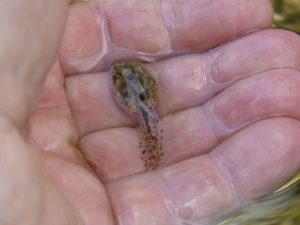
Stage 2: Tadpole
When the tadpole hatches, it looks more like a fish than a frog. It doesn’t have any legs! It has gills that allow it to breathe underwater. The tadpole swims, eats plants and algae from the water, and grows for several weeks.
During this time, the tadpole starts to develop lungs so it will be able to breathe out of the water when it becomes a frog. The tadpole also starts to grow two hind legs. Now it can leap around instead of only swimming. Although the tadpole is starting to look a little more like a frog, it still has a very long tail!
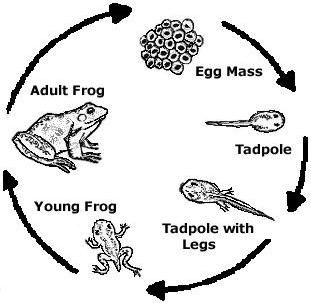
Stage 3: Young Frog
The tadpole grows two front legs and its long tail becomes shorter and shorter. The tadpole uses the nutrients stored in its tail as food, so until its tail is completely gone, it doesn’t need anything else to eat! Then just a little stub of its tail is left, and the tadpole is a young frog. It hops right out of the water and onto dry land for the first time! The frog is still very small.
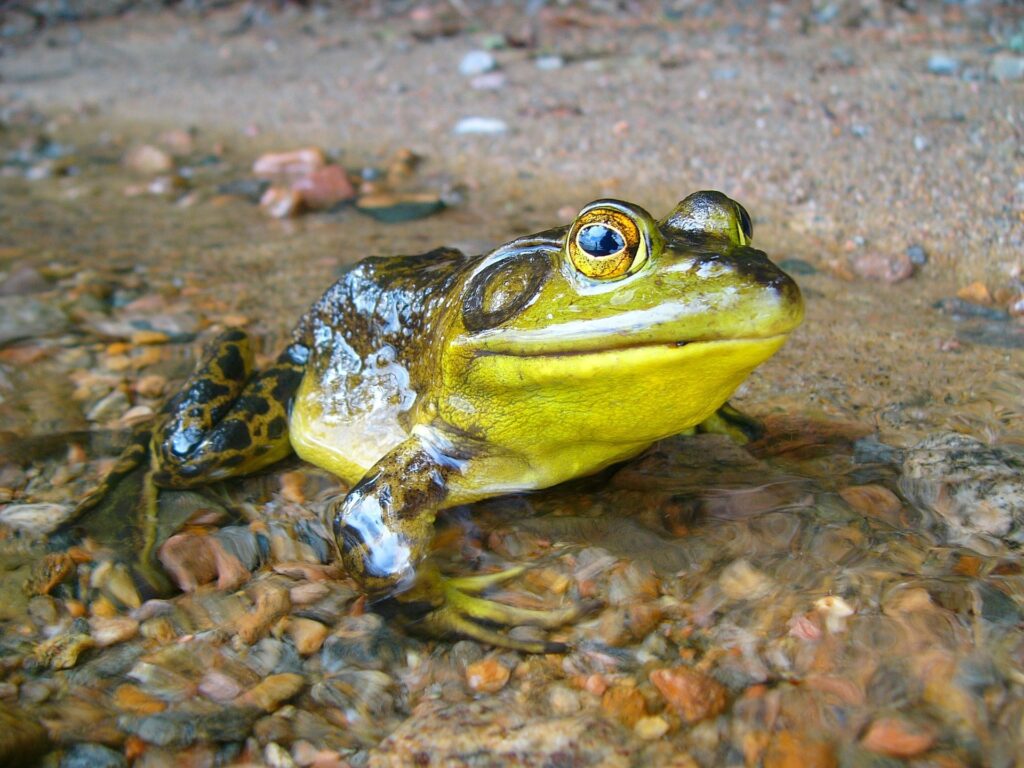
Stage 4: Adult Frog
The frog’s tail will eventually disappear completely and it will start to eat insects instead of plants from the water. The young frog will grow for about 2-4 years to become an adult. The adult frogs then lay their eggs and more tadpoles hatch and begin the cycle again!
Frog Life Cycle Worksheet
Use this free printable worksheet to learn the stages of a frog’s life cycle! Cut out the pictures of the eggs, tadpole, young frog (also called a froglet), and adult frog, and glue them to the life cycle where they belong.

Further study:
- Frog Dissection Project Guide
More Life Cycles:
- Life Cycle of a Honey Bee
- Life Cycle of a Chicken
Take your lesson to the next level and grow your own frog(s). Use our frog kit or the classic grow a frog kit kit.

Teaching Homeschool
Welcome! After you finish this article, we invite you to read other articles to assist you in teaching science at home on the Resource Center, which consists of hundreds of free science articles!
Shop for Science Supplies!
Home Science Tools offers a wide variety of science products and kits. Find affordable beakers, dissection supplies, chemicals, microscopes, and everything else you need to teach science for all ages!
Related Articles

Planning Ahead: Your Solution to Next Year’s Science
Nothing beats the feeling of next year's curriculum arriving at your doorstep. Planning for next year is exciting but can also feel overwhelming. When it comes to choosing the right science curriculum for your family, we're here to help. With numerous options...

Science Project Name Suggestions
Science Project Name Suggestions Thinking of a name for science fair projects for 7th graders or science fair projects for 8th graders is all part of the fun. Your kid’s sense of creativity will be challenged, and the unique name they come up with can boost their...
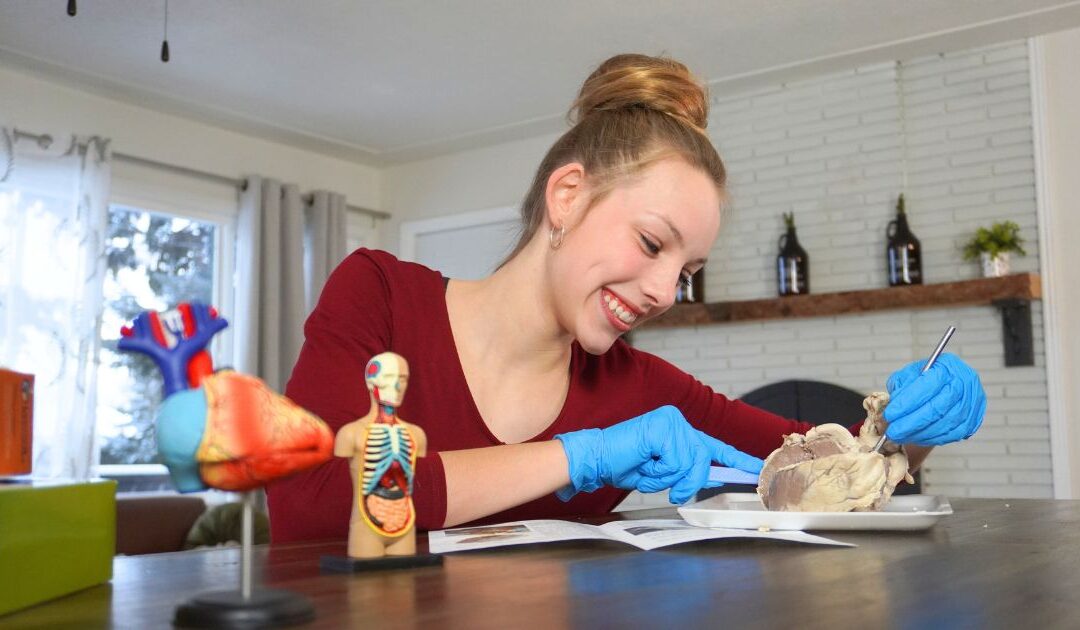
Science Fair Projects for 8th Graders
Science Fair Projects for 8th Graders As kids reach the 8th grade, their exposure to science goes up a notch. Equipped with basic knowledge, they can begin to explore more complicated concepts and satisfy their curiosity for deeper answers to the 'whys' and 'hows' of...

Science Fair Projects for 7th Graders
Science Fair Projects for 7th Graders Science fair projects for 7th graders are a step up in complexity. Because 7th graders have a better grasp of science concepts, they’re expected to practice the scientific method in the way they approach their experiments–which...

Home Science Experiments for Preschoolers
Home Science Experiments for Preschoolers Home science experiments for preschoolers are a great way to pique your child’s curiosity, teach them valuable knowledge, and allow them to have some fun in the comfort of their own home. There are plenty of activities your...
JOIN OUR COMMUNITY
Get project ideas and special offers delivered to your inbox.
An official website of the United States government
The .gov means it's official. Federal government websites often end in .gov or .mil. Before sharing sensitive information, make sure you're on a federal government site.
The site is secure. The https:// ensures that you are connecting to the official website and that any information you provide is encrypted and transmitted securely.
- Publications
- Account settings
- Browse Titles
NCBI Bookshelf. A service of the National Library of Medicine, National Institutes of Health.
Gilbert SF. Developmental Biology. 6th edition. Sunderland (MA): Sinauer Associates; 2000.
By agreement with the publisher, this book is accessible by the search feature, but cannot be browsed.
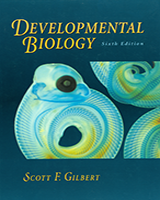
Developmental Biology. 6th edition.
The frog life cycle.
Figure 2.1 uses the development of a frog to show a representative life cycle. Let us look at this life cycle in a bit more detail. First, in most frogs, gametogenesis and fertilization are seasonal events for this animal, because its life depends upon the plants and insects in the pond where it lives and on the temperature of the air and water. A combination of photoperiod (hours of daylight) and temperature tells the pituitary gland of the female frog that it is spring. If the frog is mature, the pituitary gland secretes hormones that stimulate the ovary to make estrogen. Estrogen is a hormone that can instruct the liver to make and secrete the yolk proteins, which are then transported through the blood into the enlarging eggs in the ovary. * The yolk is transported into the bottom portion of the egg ( Figure 2.2A ).
Early development of the frog Xenopus laevis. (A) As the egg matures, it accumulates yolk (here stained yellow and green) in the vegetal cytoplasm. (B) Frogs mate by amplexus, the male grasping the female around the belly and fertilizing the eggs as they (more...)
Another ovarian hormone, progesterone, signals the egg to resume its meiotic division. This is necessary because the egg had been “frozen” in the metaphase of its first meiosis. When it has completed this first meiotic division, the egg is released from the ovary and can be fertilized. In many species, the eggs are enclosed in a jelly coat that acts to enhance their size (so they won't be as easily eaten), to protect them against bacteria, and to attract and activate sperm.
Sperm also occur on a seasonal basis. The male leopard frogs make their sperm in the summer, and by the time they begin hibernation in autumn, they have all the sperm that are to be available for the following spring's breeding season. In most species of frogs, fertilization is external. The male frog grabs the female's back and fertilizes the eggs as the female frog releases them ( Figure 2.2B ). Rana pipiens usually lays around 2500 eggs, while the bullfrog, Rana catesbiana, can lay as many as 20,000. Some species lay their eggs in pond vegetation, and the jelly adheres to the plants and anchors the eggs ( Figure 2.2C ). Other species float their eggs into the center of the pond without any support.
Fertilization accomplishes several things. First, it allows the egg to complete its second meiotic division, which provides the egg with a haploid pronucleus . The egg pronucleus and the sperm pronucleus will meet in the egg cytoplasm to form the diploid zygotic nucleus. Second, fertilization causes the cytoplasm of the egg to move such that different parts of the cytoplasm find themselves in new locations ( Figure 2.2D ). Third, fertilization activates those molecules necessary to begin cell cleavage and development ( Rugh 1950 ). The sperm and egg die quickly unless fertilization occurs.
During cleavage, the volume of the frog egg stays the same, but it is divided into tens of thousands of cells ( Figure 2.2E - H ). The animal hemisphere of the egg divides faster than the vegetal hemisphere does, and the cells of the vegetal hemisphere become progressively larger the more vegetal the cytoplasm. A fluid-filled cavity, the blastocoel , forms in the animal hemisphere ( Figure 2.2H ). This cavity will be important for allowing cell movements to occur during gastrulation.
Gastrulation in the frog begins at a point on the embryo surface roughly 180 degrees opposite the point of sperm entry with the formation of a dimple, called the blastopore. Cells migrate through the blastopore and toward the animal pole ( Figure 2.3A , B ). These cells become the dorsal mesoderm. The blastopore expands into a circle ( Figure 2.3C ), and cells migrating through this circle become the lateral and ventral mesoderm. The cells remaining on the outside become the ectoderm, and this outer layer expands vegetally to enclose the entire embryo. The large yolky cells that remain at the vegetal hemisphere (until they are encircled by the ectoderm) become the endoderm. Thus, at the end of gastrulation, the ectoderm (the precursor of the epidermis and nerves) is on the outside of the embryo, the endoderm (the precursor of the gut lining) is on the inside of the embryo, and the mesoderm (the precursor of connective tissue, blood, skeleton, gonads, and kidneys) is between them.
Continued development of Xenopus laevis. (A) Gastrulation begins with an invagination, or slit, in the future dorsal side of the embryo. (B) This slit, the dorsal blastopore lip, as seen from the ventral surface (bottom) of the embryo. (C) The slit becomes (more...)
Organogenesis begins when the notochord—a rod of mesodermal cells in the most dorsal portion of the embryo—tells the ectodermal cells above it that they are not going to become skin. Rather, these dorsal ectoderm cells are to form a tube and become the nervous system. At this stage, the embryo is called a neurula . The neural precursor cells elongate, stretch, and fold into the embryo ( Figure 2.3A - D ), forming the neural tube . The future back epidermal cells cover them. The cells that had connected the neural tube to the epidermis become the neural crest cells . The neural crest cells are almost like a fourth germ layer. They give rise to the pigment cells of the body (the melanocytes), the peripheral neurons, and the cartilage of the face. Once the neural tube has formed, it induces changes in its neighbors, and organogenesis continues. The mesodermal tissue adjacent to the notochord becomes segmented into somites , the precursors of the frog's back muscles, spinal cord, and dermis (the inner portion of the skin). These somites appear as blocks of mesodermal tissue ( Figure 2.3F , G ). The embryo develops a mouth and an anus, and it elongates into the typical tadpole structure. The neurons make their connections to the muscles and to other neurons, the gills form, and the larva is ready to hatch from its egg jelly. The hatched tadpole will soon feed for itself once the yolk supply given it by its mother is exhausted ( Figure 2.3H ).
Amphibian development. The development of frogs is best portrayed in time-lapse movies and 3-D models. This CD-ROM segment follows amphibian development from fertilization through metamorphosis. [Click on Amphibian]
Metamorphosis of the tadpole larva into an adult frog is one of the most striking transformations in all of biology ( Figure 2.4 ). In amphibians, metamorphosis is initiated by hormones from the tadpole's thyroid gland, and these changes prepare an aquatic organism for a terrestrial existence. (The mechanisms by which thyroid hormones accomplish these changes will be discussed in Chapter 18.) In anurans (frogs and toads), the metamorphic changes are most striking, and almost every organ is subject to modification. The changes in form are very obvious. For locomotion, the hindlimbs and forelimbs differentiate as the paddle tail recedes. The cartilaginous skull of the tadpole is replaced by the predominantly bony skull of the young frog. The horny teeth the tadpole uses to tear up pond plants disappear as the mouth and jaw take a new shape, and the fly-catching tongue muscle of the frog develops. Meanwhile the large intestine characteristic of herbivores shortens to suit the more carnivorous diet of the adult frog. The gills regress, and the lungs enlarge.
Metamorphosis of the frog Rana. (A) Huge changes are obvious when one contrasts the tadpole and the adult bullfrog. Note especially the differences in jaw structure and limbs. (B) Premetamorphic tadpole. (C) Prometamorphic tadpole, showing hindlimb growth. (more...)
As metamorphosis ends, the development of the first germ cells begins. In Rana pipiens, egg development lasts 3 years. At that time, the frog is sexually mature and can produce offspring of her own. The speed of metamorphosis is carefully keyed to environmental pressures. In temperate regions, for instance, metamorphosis must occur before the pond becomes frozen. A Rana pipiens frog can burrow into the mud and survive the winter; its tadpole cannot.
2.1 Immortal animals. Imagine a multicellular animal that acquires immortality by reverting back to its larval form instead of growing old. That seems to be what the marine hydranth Turritopsis does. http://www.devbio.com/chap02/link0201.shtml
2.2 The human life cycle. The human animal provides a fascinating life cycle to study. Here are some websites that speculate about (A) when is an embryo or fetus “human”? (B) how might the strange way the human brain develops necessitate childhood? and (C) do humans undergo metamorphosis? http://www.devbio.com/chap02/link0202.shtml
Since the bottom half of the egg usually contains the yolk, it divides more slowly (because the large yolk deposits interfere with cleavage). This portion is the vegetal hemisphere of the egg. Conversely, the upper half of the egg usually has less yolk and divides faster. This upper portion is called the animal hemisphere of the egg. †
As we will see in later chapters, there are numerous ways by which the synthesis of a new protein can be induced. Estrogen stimulates the production of vitellogenin protein in two ways. First, it uses transcriptional regulation to make new vitellogenin mRNA. Before estrogen stimulation, no vitellogenin message can be seen in the liver cells. After stimulation, there are over 50,000 vitellogenin mRNA molecules in these cells. Estrogen also uses translational regulation to stabilize these particular messages, increasing their half-life from 16 hours to 3 weeks. In this way, more protein can be translated from each message.
The terms animal and vegetal reflect the movements of cells seen in some embryos (such as those of frogs). The cells derived from the upper portion of the egg are actively mobile (hence, animated), while the yolk-filled cells were seen as being immobile (hence, like plants).
- Cite this Page Gilbert SF. Developmental Biology. 6th edition. Sunderland (MA): Sinauer Associates; 2000. The Frog Life Cycle.
Related Items in Bookshelf
- All Textbooks
Recent Activity
- The Frog Life Cycle - Developmental Biology The Frog Life Cycle - Developmental Biology
Your browsing activity is empty.
Activity recording is turned off.
Turn recording back on
Connect with NLM
National Library of Medicine 8600 Rockville Pike Bethesda, MD 20894
Web Policies FOIA HHS Vulnerability Disclosure
Help Accessibility Careers

Life cycle of a frog
I can name and describe the stages of a frog's life cycle.
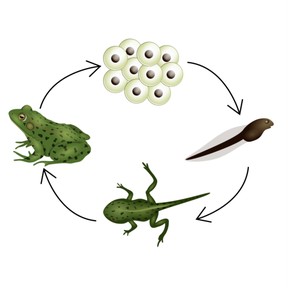
8,000 schools use Gynzy
92,000 teachers use Gynzy
1,600,000 students use Gynzy
Follow a frog’s journey from an embryo to a fully grown frog. This lesson provides illustrations to show how frogs grow, first developing gills and a tail as a tadpole, then developing lungs and legs as a froglet. Flow charts with descriptions are included to show students what this looks like, and the lesson ends with a blank circular flow chart for students to demonstrate what they've learned.
NGSS: 3-LS1-1
Learning Objective
Students will be able to name, in order, the four stages of a frog's life cycle.
Introduction
A flow map is shown of a person’s life. One step is missing/empty and students have to draw or write in the missing stage. Explain that just as humans have stages in their lives, every living thing does too! Define what a life cycle is and explain that during a life cycle, living things may change or grow.
Instruction
Begin showing students the life cycle of a frog with the embryo first. Then move on to the tadpole and froglet. Finally, describe the transformation into an adult frog. Have students drag the pictures and labels into the correct box to show the sequence of a frog’s life cycle. Next, students draw a line to match the life stage to its description. Then students read a passage about “Freddy the Frog.” Read the story of his life and drag the correct words to fill in the blanks. Finally, students will have to rearrange the images to put them in the correct order and match the description to each life stage.
Students respond to ten multiple-choice and true/false questions. They will also drag the images of each life stage to the correct place.
Students use the pencil tool to fill in the diagram. Have students draw, name, and describe each stage of the life cycle of a frog.
Related Lessons
We offer a wide array of blank">science lessons filled with fun activities to keep students engaged, covering topics such as: - blank">How young and adult animals are alike and unlike - blank">How adult animals protect their offspring - blank">Why animals form groups - blank">Mimicry in nature - blank">Life cycle of a butterfly
The online teaching platform for interactive whiteboards and displays in schools
Save time building lessons
Manage the classroom more efficiently
Increase student engagement
Discover more !

About Gynzy
Gynzy is an online teaching platform for interactive whiteboards and displays in schools.
With a focus on elementary education, Gynzy’s Whiteboard, digital tools, and activities make it easy for teachers to save time building lessons, increase student engagement, and make classroom management more efficient.
Get started with Gynzy
- International
- Schools directory
- Resources Jobs Schools directory News Search

All about frogs presentation and life cycle activity KS1
Last updated
23 November 2023
- Share through email
- Share through twitter
- Share through linkedin
- Share through facebook
- Share through pinterest
Resources included (2)

Life cycle of a frog foldable sequencing activity cut and paste KS1 KS2

All about frogs PowerPoint presentation KS1 science
This resource is a 23 slide PowerPoint and differentiated frog life cycle sequence activity. Suitable for spring science lessons or to use alongside rearing your own frogs from tadpoles.
Resource 1 - All about frogs PowerPoint Ribbit! This 23 slide PowerPoint presentation gives younger pupils a basic introduction to frogs, their features and life cycle. This engaging resource contains bright images, clear diagrams as well as animation to help children increase their understanding of these amazing amphibians.
The images are fixed in place but the text boxes allow for you to edit the content as you wish to suit the needs of your learners.
A full video preview of this resource can be viewed - please check this out prior to purchase to see exactly what’s included.
**Resource 2 - Life cycle of a frog foldable ** Pupils will love learning about the life cycle of a frog with this fun science craft! This is an engaging activity to support science learning on pond life, amphibians, life cycles, or frogs.
This resource contains 5 different templates so that you can differentiate the activity if needed:
Four part life cycle to colour, cut and fold.
Four part life cycle to colour, cut, order the stages, glue and fold.
Six stage life cycle to colour, cut and fold.
Six stage life cycle to colour, write in the life cycle stages, cut and fold.
Six stage life cycle to colour, cut, order the life cycle stages, glue and fold.
Instructions and pictures showing how to fold are included.
Tes paid licence How can I reuse this?
Your rating is required to reflect your happiness.
It's good to leave some feedback.
Something went wrong, please try again later.
This resource hasn't been reviewed yet
To ensure quality for our reviews, only customers who have purchased this resource can review it
Report this resource to let us know if it violates our terms and conditions. Our customer service team will review your report and will be in touch.
Not quite what you were looking for? Search by keyword to find the right resource:
- Manage Account
- Website Survey
- Voter Guide
- Things to Do
- Public Notices
- Help Center
arts entertainment Performing Arts
Dallas Symphony begins its semi-staged Wagner ‘Ring’ with the cycle’s first two operas
Music director fabio luisi will conduct ‘das rheingold’ and ‘die walküre’ at the meyerson..
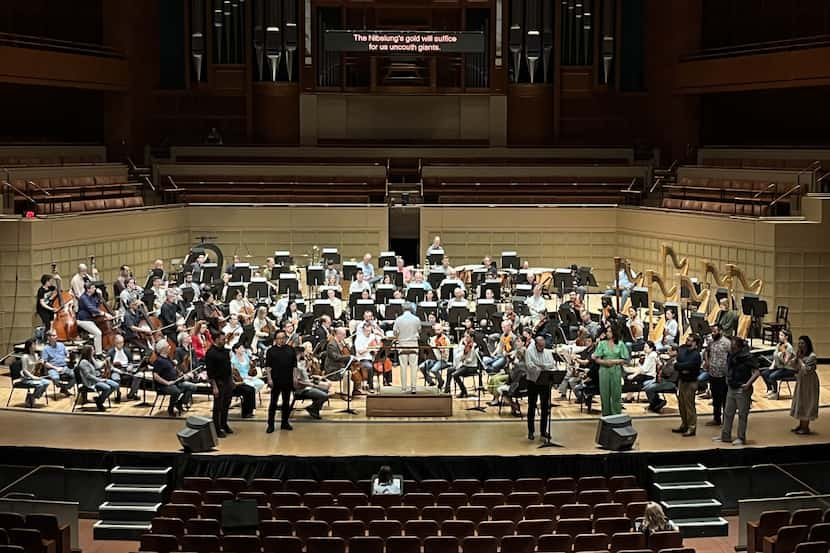
By Scott Cantrell
6:00 AM on Apr 25, 2024 CDT
It’s one of the great epics of Western civilization, a four-part drama of family dysfunction and betrayal, of gods and mortals, giants and dwarfs, sacrifice and ultimate cleansing and renewal by fire and water. First performed as a cycle in 1876, Richard Wagner’s The Ring of the Nibelung represented bold new theatrical conceptions, and it has inspired subsequent stagings of mind-boggling imagination (and sometimes perversity).
The operatic tetralogy was also musically innovative, exploring new harmonic ambiguities and new orchestral colors. Continuous flows of music replaced the separate recitatives and arias of earlier operas. Recurrent musical themes called leitmotifs represented individual characters, settings, concepts, even a magic sword — and sometimes hidden thoughts.
Wagner called his Ring a Gesamtkunstwerk , a complete artwork melding language, scenery, dramatic interactions and newly expressive music. The Dallas Symphony Orchestra , though, is presenting the first two Ring operas — Das Rheingold and Die Walküre — in semi-staged performances at the Meyerson Symphony Center . The remaining two operas, Siegfried and Götterdämmerung , will be presented in October, along with the entire four-opera cycle in sequence.
With no sets and minimal props, singers will enact the drama on an additional forward stage extension — and sometimes on the choral terrace. Coordinating with singers via video monitors, music director Fabio Luisi will conduct the orchestra upstage. Simultaneous English translations will be projected over the stage.
Catch up on the day's news you need to know.
By signing up you agree to our Terms of Service and Privacy Policy
Luisi’s extensive and acclaimed experience in major opera houses on both sides of the Atlantic included seven years as principal conductor at the Metropolitan Opera in New York. He conducted the Met’s Ring , DVDs of the last two operas garnering a Grammy Award. At his 2018 DSO appointment, Luisi announced plans for regular concert performances of operas. ( Former music director Jaap van Zweden conducted a concert performance of Die Walküre in 2018 .)
The DSO’s semi-staging is by Italian director Alberto Triola, who also directed DSO performances of Strauss’ Salome (2020) and Tchaikovsky’s Eugene Onegin (2022).
Casts include Mark Delavan (Wotan), Stefan Margita (Loge), Deniz Uzun (Fricka), Tómas Tómasson (Alberich), Liang Li (Fasolt), Andrew Harris (Fafner), Sara Jakubiak (Sieglinde), Christopher Ventris (Siegmund), Stephen Milling (Hunding) and Lise Lindstrom (Brünnhilde).
Staging with light
The Ring revolves around a collection of gold with magical powers. Over the course of many episodes, characters both human and divine cheat, steal and murder to access that power. Ultimately, the gods themselves are doomed by the double-dealing of their head, Wotan, leading to collapse of the old world order and a new beginning.
With Wagner’s interweaving of philosophy, German and Norse myths — and socio-political critiques — both new and revived Ring stagings draw passionate devotees from around the world. How will each production portray fantastic scenes in the Rhine River, in a subterranean sweatshop, on a fire-ringed mountain and in a heavenly palace? Even for major international opera houses, assembling casts of necessarily heroic voices is a challenge, although a concert performance or semi-staging commits singers for less time.
With limited space, technical resources and rehearsal time, Triola had to devise a less obvious visual presentation.
“I found inspiration in light,” he says. “The music of Wagner is full of light. I have associated one color to each character, and each environment, and in some cases objects have their own colors. Das Rheingold is the most colorful of the four operas, finishing with a rainbow.”
Triola also will use some spaces apart from the stage extension. The Meyerson’s big C.B. Fisk organ will represent Valhalla, the new heavenly palace the gods prepare to enter at the end of Das Rheingold .
In our day of Regietheater — director’s theater — when Ring productions are as likely to perplex as illuminate, Luisi wanted more emphasis on the music.
“I hope the audience will be involved with this music,” he says, “that they can let go with the music, just be carried along by the music, without visual distraction. I try to make the visual experience less important in order to increase the importance of the auditory experience. For us musicians, it is ideal to do it in this concert form.
“The music is not always illustrating what’s happening onstage, but sometimes what the characters are not saying. When they are lying, you hear it in the music, and they lie all the time. It is a socio-political piece.”
Instrumental novelties
It’s a cliché that Wagner’s music is loud, and it certainly has some powerful climaxes. But most of the Ring is of moderate or even quiet sound levels. It does, however, call for some unusual instruments and combinations.
The score specifies, among other things, 12 harps (usually reduced to six), eight horns (four doubling on Wagner tubas), bass trumpet, contrabass trombone and, for the subterranean smithy, 18 anvils. What are called Wagner tubas, or tuben, were conceived by Wagner himself to bridge the sonic gap between horns and trombones. They look like small tubas with angled bells at the tops.
“They create an entirely unique, surreal and otherworldly sound concept and emotional effect whenever the theme for Valhalla is played,” says DSO principal horn Daniel Hawkins. “The tuben and horns use the same mouthpiece, and it is not uncommon for horn players to learn how to switch back and forth between these two instruments nowadays.”
Two of the Wagner tubas here will be played by DSO musicians, two by guests. This will be the first outing for a brand new set of handmade Wagner tubas from the Viennese maker Andreas Jungwirth. “These new instruments are beautiful works of art,” Hawkins says, “and they sound so majestic.”
Yet another challenge is scheduling unionized symphony orchestra musicians, accustomed to two-hour concerts, for operas that, in the case of the last Ring opera, Götterdämmerung , can last five hours (with intermissions).
“We had several discussions with the orchestra committee, making sure we were staying within the contract as much as possible,” says Katie McGuinness, the DSO’s chief artistic officer. “And when we had to stretch the rules of the contract, we had lengthy discussions with the musicians.
“I think they’re really excited about this opportunity, so they want to embrace this.”
We’ll have to wait till October for the completion of the DSO Ring , and for that great Redemption theme that soars at the end of Götterdämmerung. But along the way, Wagner’s great epic plumbs depths and scales summits of human experience, in music of unparalleled glory.
“As a conductor, my life changed when I first did the Ring ,” Luisi says. “My life as a musician and as a human being. You get a new understanding of pace and time.
“At the end of my first Götterdämmerung , I was enlightened. I was not tired at all. I was euphoric and enlightened. It was an unbelievable experience.”
The Dallas Symphony Orchestra and singers perform Das Rheingold at 7:30 p.m. May 1 and 4, and Die Walküre at 6 p.m. May 2 and 3 p.m. May 5. All performances at Meyerson Symphony Center, 2301 Flora St., Dallas. Each performance $60 to $303. 214-849-4376, dallassymphony.org .

Scott Cantrell , Special Contributor . Former staff classical music critic Scott Cantrell continues contributing as a freelance writer on classical music and art. His classical music reporting is supported by the Rubin Institute for Music Criticism, the San Francisco Conservatory of Music, and the Ann and Gordon Getty Foundation. The News makes all editorial decisions.
Top Arts & Entertainment Stories
Movies in north texas theaters on april 26 and coming soon.
/cloudfront-us-east-1.images.arcpublishing.com/dmn/D4FJ726DTR6SREKVO4SCKYKNEE.jpg)
Country star Reba McEntire will host the ACM Awards in Frisco
/cloudfront-us-east-1.images.arcpublishing.com/dmn/VVGIMAHWGFF2BPST7A36S4AYJY.jpg)
New book argues for removal of I-345 in Dallas
/cloudfront-us-east-1.images.arcpublishing.com/dmn/OM2IDS6SQBE33ADVQBOHVMSWBE.jpg)
New York appeals court overturns Harvey Weinstein’s 2020 rape conviction
/cloudfront-us-east-1.images.arcpublishing.com/dmn/YH4SVORUYHKSJ64K6VBOV7FDIU.jpg)
Civil rights activist’s story resonates with ‘Fannie’ actor Liz Mikel
/cloudfront-us-east-1.images.arcpublishing.com/dmn/5AJVFJU2ORBDTFBQSTEZQXAH4E.jpg)
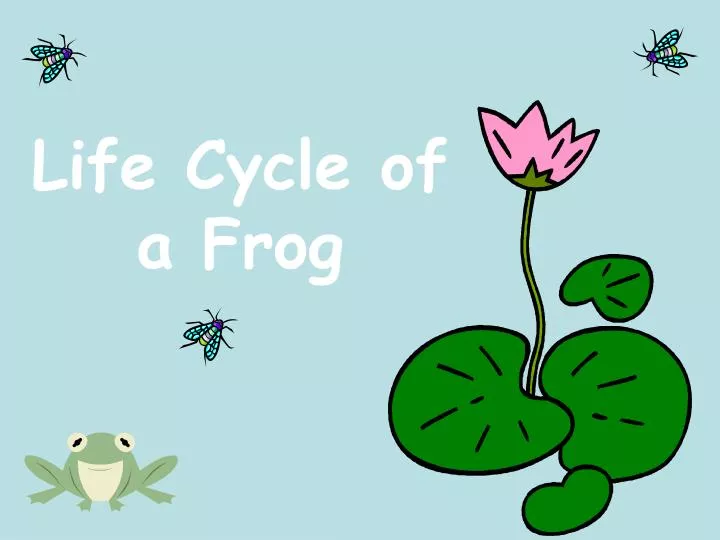
Life Cycle of a Frog
Oct 09, 2014
440 likes | 842 Views
Life Cycle of a Frog. The frog lays its eggs in the water or in wet places. A floating clump of eggs is called a frog spawn. A frog can lay thousands of eggs at one time!. WOW!. After 21 days, a tadpole is born! A tadpole is a baby frog. A tadpole has a long tail and lives in the water.
Share Presentation
- tadpole starts
- tadpole swims
- tadpole grows legs
- tadpole grows hind legs

Presentation Transcript
The frog lays its eggs in the water or in wet places.
A floating clump of eggs is called a frog spawn.
A frog can lay thousands of eggs at one time! WOW!
After 21 days, a tadpole is born! A tadpole is a baby frog.
A tadpole has a long tail and lives in the water.
Tadpoles eat very small plants that stick to larger plants in the water. These small plants are called algae.
After about 5 weeks, the tadpole grows hind legs and forelegs.
The tadpole also starts developing lungs!
Once in a while the tadpole swims up to the surface to breathe some air.
Over the next few weeks, the tadpole starts looking more like a frog. The tadpole’s tail gets smaller and it’s legs get larger. It’s lungs get bigger too.
Finally, the tadpole turns into a frog!
A frog has legs, lungs, and no tail. It eats insects and worms and lives mostly on land.
Eventually the frog finds a mate. The female lays eggs and the male fertilizes them.
Thenthe cycle begins all over again!
The frog lays it’s eggs. A tadpole is born.
The tadpole grows legs and develops lungs…
And then the tadpole turns into a frog!
CREDITS: Created by Stefanie Oddo All images courtesy of Microsoft Clipart Information provided from: http://www.tooter4kids.com/Frogs/life_cycle_of_frogs.htm
- More by User
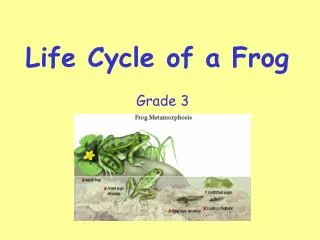
Life Cycle of a Frog. Grade 3. Metamorphosis. Metamorphosis is the changes that a frog goes through during its life cycle. There are four main stages in the life cycle of the frog. Egg. The first stage in the life cycle of the frog is the egg . A frog lays many eggs at one time.
968 views • 13 slides

Life Cycle of a Frog. Write On Grade 3 - 4. Learner Expectation. Content Standard: 4.0 Heredity and Reproduction The student will understand the basic principles of inheritance. Learning Expectations: 4.1 Recognize that living things reproduce.
422 views • 8 slides

Life Cycle of a Frog. Compiled by Angel Van Horn RCOE, The Copernicus Project. Metamorphosis. Metamorphosis is the changes that a frog goes through during its life cycle . There are four main stages in the life cycle of a frog.
1.7k views • 21 slides

Life Cycle of a Frog. Metamorphosis. Metamorphosis is the changes that a frog goes through during its life cycle. There are four main stages in the life cycle of a frog. Frogs have a life cycle with two parts, living in water as tadpoles and on land as adults. . Egg.
1.72k views • 20 slides

Life Cycle of a Frog. Life Cycle of a Frog. The adult frog lays eggs. The adult frog lays eggs . Egg. Egg. The egg hatches into a tadpole . Pollywog is another name for a tadpole. Tadpole. Tadpole. The tadpole turns into an adult frog, through a process called metamorphosis .
319 views • 11 slides

Life Cycle of a Frog. By Irene So 2 nd Grade. 2 nd Grade State Standard. SCIENCE (Life Sciences) B. Students know the sequential stages of life cycles are different for different animals such as butterflies, frogs, and mice. Stage 1: Egg. The eggs are laid in water or wet places
215 views • 8 slides

Life Cycle of a Frog . 2 nd Grade Science Veronica Uzarraga June 7, 2012. Menu . Life Cycle of Frog Posttest Exit Slideshow . What are these? . ????. TADPOLES! . Life Cycle . Lets Watch a video of the life cycle. http:// www.youtube.com/watch?v=aTanXdFVEOw&feature=related.
623 views • 12 slides

LIFE CYCLE OF A FROG
LIFE CYCLE OF A FROG. EGG. The Egg hatches into a tadpole. Tiny frog eggs are laid in the water by a female frog. TADPOLE (polliwog). Swims in water Breathes using gills. TADPOLE WITH LEGS. Sprouts legs, and then arms Still swims in water, and breathes using gills. FROGLET.
310 views • 8 slides

Life Cycle of a Frog. Put your thinking cap on!. What is a life cycle? Does the baby frog look like the adult frog or do they look different? What are the stages in a frogs life cycle ?. http:// kiddyhouse.com/Stories/WhoamI/who11.html. Eggs: Frogs lay their eggs in water. .
286 views • 7 slides

Life Cycle of a Frog. The First Stage. The frog lay eggs in water. The Second Stage. The eggs hatch into tadpole . The Third Stage. Tadpole with back legs. The Fourth Stage. Front legs grows , tail gets smaller. The Fifth Stage. The tadpoles grows into frog . 2. 1. 3. Frog
335 views • 16 slides

Life Cycle of a Frog. First Grade Standard:. Metamorphosis. Metamorphosis is the changes that a frog goes through during its life cycle . There are four main stages in the life cycle of a frog.
484 views • 19 slides

Life Cycle of a Frog. By: Laura Johns. Mother frogs lay eggs . Young frogs or tadpoles hatch from eggs. The tadpole grows into a froglet . It becomes a fully grown frog . Mother frogs can lay eggs . A new life cycle begins. Click on the answer. Insects. Legs. Land. World.
288 views • 19 slides

Life Cycle of a Frog. By Shannon Strugala CS 255. Stages of a Frog. Eggs are laid in water. Tadpoles swim in the water and breathe using gills. Tadpoles grow legs before they become an actual frog.
249 views • 9 slides

Life Cycle of a frog
Life Cycle of a frog. How do frogs change?. When two frogs meet the boy frog tends to clasp the girl . While in the anplexus position the boy frog fertilizes the eggs as they are laid.
251 views • 10 slides

Life Cycle of a Frog. From: www.graves.k12.ky.us/powerpoints/ elementary /ffagreen.ppt. The adult frog lays eggs. Egg. The egg hatches into a tadpole. Pollywog is another name for a tadpole. Tadpole. The tadpole turns into an adult frog, through a process called metamorphosis .
312 views • 10 slides

Life Cycle of a Frog. The adult frog lays eggs. Egg. The egg hatches into a tadpole. Pollywog is another name for a tadpole. Tadpole. The tadpole turns into an adult frog, through a process called metamorphosis. Metamorphosis means change. Adult. …and the life cycle begins again.
241 views • 10 slides

Life Cycle of a Frog. Metamorphosis. Metamorphosis is the changes that a frog goes through during its life cycle. There are four main stages in the life cycle of the frog. Egg. The first stage in the life cycle of the frog is the egg . A frog lays many eggs at one time.
1.41k views • 13 slides

Life Cycle of a Frog.
89 views • 1 slides
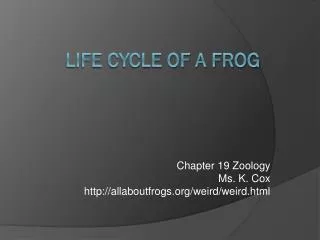
Chapter 19 Zoology Ms. K. Cox http://allaboutfrogs.org/weird/weird.html. Life Cycle of a Frog. True Love? We will start with mating.
964 views • 78 slides

Intro. Outline. Vocabulary. Cycle Stages. Dissecting. Review. Life Cycle of a Frog. Jasmine Hill IDT 7062. Intro. Outline. Vocabulary. Cycle Stages. Dissecting. Review. Navigation Instructions. The panel above this writing will navigate you through each slide and back to home.
399 views • 21 slides

Life Cycle of A Frog
Life Cycle of A Frog. Megan Quillen Middle School Biology Understand the predictability of characteristics being passed from parents to offspring. Explain how a particular environment. Question. Draw the life cycle of a frog. Label all parts of the cycle. Answer.
225 views • 4 slides

Life Cycle of a Frog. Warner J oseph Espejo Karlo Olym Carin Zerck A llen Dinopol. ENACTIVE. toy model of a frog. Drawing. ICONIC. SYMBOLIC. Explaining the life cycle of the frog Discuss the different species of frogs Habitats of frogs Diet of frogs.
163 views • 4 slides

IMAGES
VIDEO
COMMENTS
Frog Spawn Frogs lay. Tadpole The tadpole has. Growing bigger After about. A young frog Over. An adult frog Eleven. Let's have one. I hope you. I hope you. The Life cycle of frog - Download as a PDF or view online for free.
The frog life cycle. Frogs are animal athletes, with strong powerful legs that allow them to leap out of harm's way. These powerful limbs are the secret to their success - and incredibly, it takes baby frogs weeks and weeks to grow them! Like beautiful butterflies, frogs and toads undergo an astonishing transformation - which is called ...
The life cycle of a frog begins with eggs, often laid in a cluster or string format, usually in still water or damp places. Females deposit hundreds or thousands of eggs to increase the chances of survival. The eggs are vulnerable to various predators and environmental conditions. Females of some species retain fertilized eggs and release them ...
There are over 4,800 known frog species found worldwide in a variety of habitats, from rainforests to deserts. They come in a wide range of colors, sizes, and even have unique adaptations depending on their environment. Frogs undergo a remarkable metamorphosis during their life cycle. They start as eggs laid in water, which hatch into tadpoles.
Presentation Transcript. Metamorphosis • Metamorphosis is the changes that a frog goes through during its life cycle. • There are four main stages in the life cycle of a frog. Frogs have a life cycle with two parts, living in water as tadpoles and on land as adults. Egg • The first stage in the life cycle of the frog is the egg.
The life cycle of a frog consists of three stages: egg, larva, and adult. As the frog grows, it moves through these stages in a process known as metamorphosis. Frogs are not the only animals to undergo metamorphosis; most other amphibians also undergo remarkable changes throughout their life cycles, as do many species of invertebrates. During ...
Summary - Four Stages of the Life Cycle of a Frog. Stage 1. Egg -. It is covered in a Jelly-like substance. Stage 2. Tadpole -. Tadpole breathes through gills. At an early stage, Tadpole has no legs, but later at this stage only it develops two back (hind) legs.
https://patreon.com/freeschool - Help support more content like this!Frogs have one of the most fascinating life cycles on the planet. At hatching, the baby ...
1 st Back or Hind legs grow - 8 weeks. 2 nd Front legs or arms grow - 12 weeks. 3 rd Tail retracts (gets smaller) 4 th Frog jumps out of water on to land! Review. Frog Diet. Frogs only have teeth on their upper jaw. A frogs tongue is sticky. A frog eats.
Stage 1: Egg. A frog begins life as a fertilized egg. A female frog lays a lot of eggs at one time in a pond. The eggs float on water in a jelly mass or cluster. The eggs will soon hatch into tadpoles! Stage 2: Tadpole. When the tadpole hatches, it looks more like a fish than a frog. It doesn't have any legs!
The frog life cycle has four main stages. They are as follows: Frogspawn is a cluster of embryos laid by mother frogs. The frogspawn hatch into tadpoles, which are small wiggling organisms. The tadpoles sprout legs and become late-stage tadpoles. These tadpoles grow and eventually turn into adult frogs.
USA.gov. Figure 2.1 uses the development of a frog to show a representative life cycle. Let us look at this life cycle in a bit more detail. First, in most frogs, gametogenesis and fertilization are seasonal events for this animal, because its life depends upon the plants and insects in the pond where it lives and on the temperature of the air ...
Tadpoles have a tail for swimming with. It usually takes them 6-9 weeks to fully develop as a tadpole, however some types of frogs may take much longer. Around week 12, the tadpole sprouts legs (and then arms), has a longer body, and has a bigger head. It breathes under the water and still has a tail. The adult frog breathes air and has no tail.
The Life Cycle of a Frog! The Life Cycle of a Frog!. Follow the exciting life of a frog from beginning to end!. Step 1: The Egg. The first step in the life cycle of a frog is the egg. Frogs lay eggs in large groups. From this stage the eggs will hatch and become an embryo or tadpole. Step 2:Tadpoles. 260 views • 5 slides
The frog life cycle has four main stages. They are as follows: Frogspawn is a cluster of embryos laid by mother frogs. The frogspawn hatch into tadpoles, which are small wiggling organisms. The tadpoles sprout legs and become late-stage tadpoles. These tadpoles grow and eventually turn into adult frogs.
Twinkl EYFS Early Years EYFS Planning Activity Planning and Continuous Provision Ideas Reception Topics Science and Investigation Life Cycle of a Frog. Learn all about the four stages of a frog's life cycle with this PowerPoint. Featuring simple text, this PowerPoint is perfect for Kindergarten learners.
A frog's life cycle consists of four stages. In summary, these are: Stage 1: Egg. Stage 2: Tadpole. Stage 3: Froglet (young frog) Stage 4: Adult frog. Frogs can live in water and on land, making them amphibians. Before they become adult frogs, they go through a series of life stages, all of which happen underwater.
Instruction. Begin showing students the life cycle of a frog with the embryo first. Then move on to the tadpole and froglet. Finally, describe the transformation into an adult frog. Have students drag the pictures and labels into the correct box to show the sequence of a frog's life cycle. Next, students draw a line to match the life stage to ...
All about frogs PowerPoint presentation KS1 science. This resource is a 23 slide PowerPoint and differentiated frog life cycle sequence activity. Suitable for spring science lessons or to use alongside rearing your own frogs from tadpoles. Ribbit! This 23 slide PowerPoint presentation gives younger pupils a basic introduction to frogs, their ...
• There are four main stages in the life cycle of the frog. Egg • The first stage in the life cycle of the frog is the egg. • A frog lays many eggs at one time. • The eggs are covered with a jellylike coating. Tadpole • The second stage of the frog life cycle is the tadpole. • Hatched tadpoles have gills for breathing in the water.
Details. The Dallas Symphony Orchestra and singers perform Das Rheingold at 7:30 p.m. May 1 and 4, and Die Walküre at 6 p.m. May 2 and 3 p.m. May 5. All performances at Meyerson Symphony Center ...
Presentation Transcript. Life Cycle of a Frog. The frog lays its eggs in the water or in wet places. A floating clump of eggs is called a frog spawn. A frog can lay thousands of eggs at one time! WOW! After 21 days, a tadpole is born! A tadpole is a baby frog. A tadpole has a long tail and lives in the water.